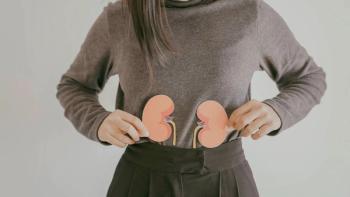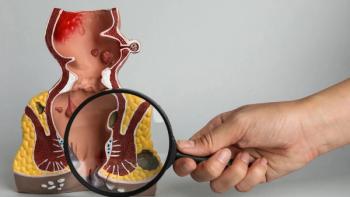
Numbing Down Neuropathy
Research and awareness help patients to understanding and manage chemotherapy-related peripheral neuropathy.
By the time Kristine Darnell told her doctor about the pain in her feet, she could barely walk. "I remember telling myself, ‘the pain is bearable.' I thought that I had to be strong and not complain," she says now.
What Darnell was experiencing is a condition called chemotherapy-induced peripheral neuropathy (CIPN), a form of nerve damage that, for some patients, is painful and so debilitating it causes them to stop their treatment early. Certain chemotherapy drugs are more often linked to neuropathy, but radiation, surgery and the tumor itself may also damage nerves.
Darnell describes her symptoms as “pins and needles.” Others describe the condition as shooting, burning, tingling or electric shock-like pain or a sense of numbness, especially in the hands and feet.
In some people, symptoms can become so severe they develop balance issues, muscle weakness, inability to perform fine tasks like sewing, and even lose the ability to walk normally. However, diagnosing the condition early and taking measures to manage it—such as changing a person’s treatment plan—can prevent it from getting worse.
“My doctors mentioned peripheral neuropathy, but I was too deep into focusing on fighting and trying to motivate myself with a positive attitude toward chemo. Side effects were not a priority for me at the time,” Darnell says.
Darnell received a diagnosis of stage 3C breast cancer in 2009, a month before her 43rd birthday. She was treated with chemotherapy, which included doxorubicin, cyclophosphamide and paclitaxel, which she initially tolerated well. Then, she began to notice a change after her tenth round of chemo.
“Every day my hands and feet hurt,” she says. “Then the pain got worse after every cycle. It would sneak up on me anywhere and anytime.” Darnell finally reported her symptoms to her doctors after her 14th cycle.
Once Darnell’s doctor was aware of her pain, he immediately stopped her treatment in an attempt to reverse the neuropathy. Though the symptoms improved over time for Darnell, who completed treatment more than three years ago and is in remission for breast cancer, peripheral neuropathy has become a chronic condition for her. Each morning, she struggles with painful numbness in her hands and feet and, some days, is still unable to walk very well.
Darnell is not alone in her struggle with painful peripheral neuropathy. Though it is one of the more common side effects of chemotherapy—as many as 20 to 40 percent of all cancer patients treated with neurotoxic (nerve-damaging) chemotherapy will develop it—painful neuropathy is also one of the most difficult to manage. In fact, peripheral neuropathy is a common reason cancer patients stop treatment early.
Unfortunately, there is no way to predict how severe a person’s peripheral neuropathy will become or how long it will take to subside; this depends on a number of factors, such as the type, duration and dosage of chemotherapy a person receives, as well as personal characteristics such as overall health, age and comorbidities, such as diabetes or other chronic diseases.
For many people, the pain of peripheral neuropathy symptoms can be lessened gradually over a period of weeks or months by lowering the dose of chemotherapy or temporarily stopping treatment until the symptoms fade. But for others, the symptoms may persist beyond chemotherapy for months, years and, rarely, indefinitely.
Relief may be in sight for Darnell and others living with painful peripheral neuropathy. New data from a phase 3 clinical trial found people, many of whom were diagnosed with gastrointestinal or breast cancers, who were initially treated with the antidepressant Cymbalta (duloxetine), had less neuropathic pain than people who were given a placebo.
In the study, 231 people were randomized to one of two arms. Participants in the first group received Cymbalta for five weeks. After one week off the drug, they then received a placebo for five weeks. Participants in the second group began with a placebo and finished with five weeks of Cymbalta. Of those treated initially with Cymbalta, 59 percent reported a decrease in any amount of pain versus 38 percent of patients treated with placebo.
“This is exciting because to date, no other treatments have been shown to be effective," says Ellen M. Lavoie Smith, assistant professor at the University of Michigan School of Nursing in Ann Arbor, Mich., and senior author of the study. However, Smith notes that Cymbalta did not help everyone. While the majority of people treated with the drug experienced less pain, others saw no change, and, in 10 percent of those treated, the pain worsened.
It is not completely clear how Cymbalta helps with nerve-related pain, but it is thought to act on certain brain chemicals involved in transmitting pain signals. Cymbalta, which the U.S. Food and Drug Administration (FDA) initially approved in 2004 to treat major depressive disorder, is also indicated for the treatment of generalized anxiety disorder, diabetic peripheral neuropathic pain, fibromyalgia and chronic musculoskeletal pain.
Smith also noted that although the decrease in pain was found in people treated with different classes of chemotherapy, people who were treated with platinum-based chemotherapies, such as oxaliplatin, may have experienced more benefit from Cymbalta than those who were treated with taxanes, including paclitaxel or docetaxel.
There is currently no FDA-approved treatment for CIPN, although some patients are treated off-label with gabapentin or pregabalin, common treatments for other forms of nerve damage-related pain. Some people with CIPN also respond to venlafaxine and other antidepressants that are sometimes used to treat nerve pain—or to opioids for severe pain management.
In addition, many people with neuropathy benefit from other complementary strategies, such as physical therapy, massage and acupuncture, commonly used to treat nerve pain. Darnell reports that she has found relief through yoga, meditation and journaling.
Smith cautions that while these treatments may be helpful for some patients, there is still very limited scientific evidence that confirms their effectiveness.
There is also no way to predict which patients undergoing chemotherapy will develop peripheral neuropathy or to what degree. But researchers at the Mayo Clinic in Rochester, Minn., have pinpointed variations in three genes that could someday help doctors identify which patients are more susceptible to the condition—findings that could help doctors one day individualize treatment, either by choosing a chemo drug less likely to cause peripheral neuropathy or by lowering the dose of the drug.
In a study that examines large amounts of the human genome—the complete set of a person’s genetic information—for predictors of chemotherapy side effects, a team of researchers led by Andreas Beutler, assistant professor of oncology at the Mayo Clinic, performed exome sequencing—a type of DNA sequencing that focuses on the protein-coding areas of genes—on 20,794 genes from 119 cancer patients, over half of whom had developed CIPN. Researchers first looked at 50 genes linked to hereditary neuropathy and found one—EPHA5—that is also associated with a predisposition to CIPN, supporting previous research. Then, they discovered two other hereditary neuropathy genes—ARHGEF10 and PRX—that are also associated with CIPN.
Beutler plans to expand the study to sequence the genome in its entirety. The study will involve as many as 1,000 patients in an attempt to identify additional genes involved in symptom control regarding cancer treatment. However, it is too soon to use genetic markers routinely, and until more is known about predicting those most likely to develop CIPN, the best way to ensure that it is diagnosed in its earliest, most treatable stage is for patients to report their symptoms as soon as they develop.
“It is so important for patients to understand when going through chemo to let their doctor know when they feel the change in their hands and feet,” Darnell says. “Unfortunately I didn't let the doctor know until it was too late.”
I remember telling myself, ‘the pain is bearable.’ I thought that I had to be strong and not complain.




